Israel-Hamas War: What happened on Day 125?
Israeli drone strike targets vehicle in southern Lebanon, several killed • Israel could request a global alliance to finish destroying Gaza tunnels

Hamas stronghold in Rafah is key to its survival - analysis
For Hamas, holding on to Rafah is a key to continuing to rule Gaza.
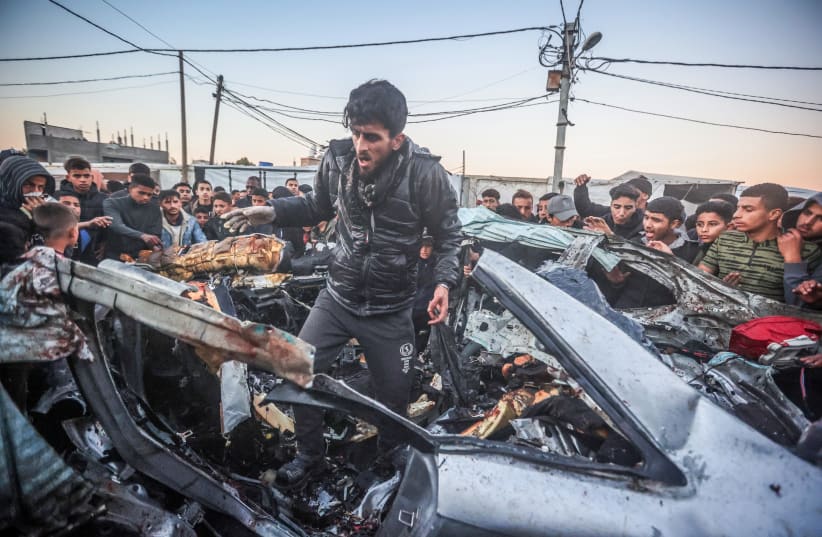
Hamas has been defeated in many parts of the Gaza strip. This is particularly true in terms of Hamas battalions, the organizational tactical level unit that it has used to control areas in Gaza. Of 24 Hamas battalions, it is believed more than 18 have been defeated or destroyed. However, Hamas continues to rule in Rafah, a key area on the Egyptian border where it controls humanitarian aid that enters Gaza.
For Hamas the control of Rafah has always been important. It wants to have a stranglehold on aid and also control other types of items, such as smuggled goods or arms stockpiles. Over the years Egypt sought to stop arms smuggling to Hamas along the border. However, for Hamas the area is of the utmost importance.
The region is now awaiting the possibility that Israel and Hamas will fight in Rafah. Al-Ain media in the UAE reported on February 7 that Israel has made preparations for operations in Gaza, and asks “has the countdown begun.” The report said “fears have been increasing for several days about an Israeli attack on the city of Rafah, on the border with Egypt, which is currently closing in on the majority of the residents of the devastated Palestinian Strip after they were forced to flee south to escape the ongoing battles for months.”
Al-Jazeera in Qatar, where key Hamas leaders live, also reported that the UN has said “everything possible” must be done to avoid an Israeli attack on Rafah. The New Arab, an online media outlet, also said that Egypt has warned Israel about Rafah and that Israeli moves there could jeopardize the peace treaty.
Overcrowding in Gaza's southernmost city
The issue of Rafah is now clear. For some commentators the humanitarian issue of overcrowding in the city by Gazans who fled fighting elsewhere is very important. However, it’s not clear why so many people fled to Rafah when they could also go to the humanitarian zone in Gaza near the coast, called Al-Mawasi. Hamas benefits from having a large number of internally displaced people in Rafah that it can use as human shields.
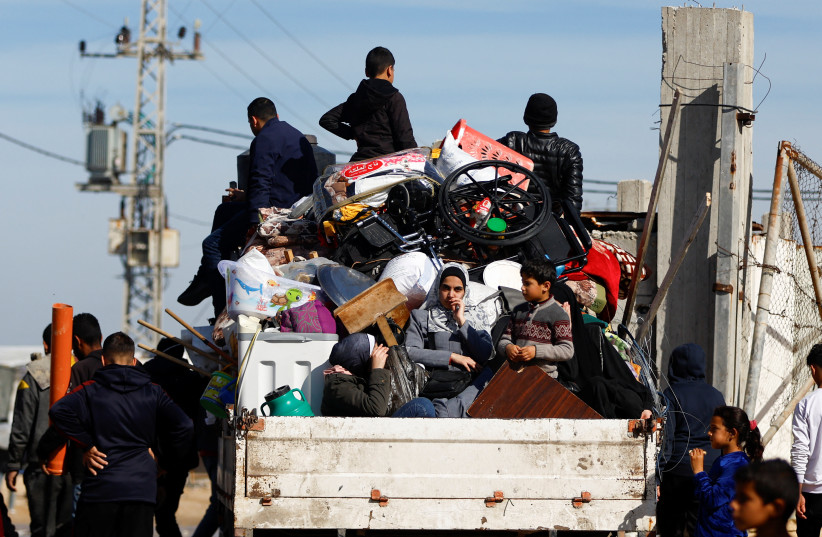
Hamas wants to survive in Gaza. It knows that it has lost control of other areas in Gaza. It has tried to infiltrate its members back to northern Gaza and has also sought to maintain civil control over areas in the north. However, when it comes to its actual terrorist units, it has suffered a lot of losses. Hamas continues to make tough demands for a hostage deal. Even as it has lost more ground, its demands have grown. It wants a long ceasefire and three-phases of hostages being released for prisoners in Israel.
It then wants the war to end and also has pushed for other concessions such as preventing Israeli surveillance in Gaza and also demanding more aid and support for reconstruction.
This has been the Hamas plan all along. It wanted to go to ground and hide for a few months and then international pressure to build on Israel. Then it would re-emerge as it has done after previous wars such as 2009, 2012, 2014, and 2021.
For Hamas, holding on to Rafah is a key to continuing to rule Gaza. It needs to control humanitarian aid because this is how it controls the people of Gaza. It has worked over the years to create a symbiotic partnership with international organizations, so that it is able to build tunnels and store weapons throughout Gaza and it outsources much of the aid work aboveground to internationals. In this way Hamas benefits and the international organizations also benefit because they get to claim they are responsible for helping people.
In one telling article at the Guardian on January 30, the role of Hamas in relation to international organizations is revealed. The article notes that “a senior UN official described Rafah, the southernmost town in Gaza, as ‘the last remaining place with any real civil order’ due to the presence of local Hamas police.” Notice how Hamas, which committed a genocidal attack on Israel, massacring civilians and dragging hostages back to Gaza, is presented as “civil order.” The terrorist group that stores rockets and weapons in schools and homes, is “civil order.”
The article reveals more of this trend of Hamas being portrayed in a positive light by international organizations that work with and rely on it. “Hamas administrators and police maintain firm control of the south, where much of the population is concentrated, though civil order is breaking down in central regions,” the article notes.
A “senior humanitarian official” told the Guardian that “You still see Hamas police in different areas who have a grip to some extent on law and order in some places including in the north.” Hamas, which launched a war on Israel and has brought destruction on Gaza and runs it as an authoritarian state is portrayed as “law and order.” It’s clear the international organizations have a preference for Hamas rule.
The article goes on to note that “aid agencies trying to distribute food, fuel and other essentials to the displaced in southern Gaza continue to deal with Hamas-appointed officials. Hamas still provides police escorts for convoys.” Another international organization member of the International Committee of the Red Cross in Gaza is quoted as saying “there is a generalised breakdown of law and order. Criminality overall is increasing.”
Note here, that Hamas which holds hostages in tunnels underground is not described as “criminality,” rather it is other Gazans. Hamas is often praised in these accounts at the Guardian for providing “aid convoys” with “armed escorts.” One quote notes “aid convoys are receiving armed escorts. It is unclear if these are Hamas police, who are still present and visible, or private security companies. There is a fine line between where one starts and the other stops.”
The portrayal here of Hamas as the “law and order” in Gaza and positive spin it receives for putting armed men to control humanitarian aid is important to understanding how Hamas control of Rafah is the stranglehold grip that helps it keep power in Gaza. Hamas must control the spigot and control its continued work with various international organizations. Hamas and these organizations have become mutually dependent on one another. The Hamas one-party terror state lets them operate and in return, like a mafia selling protection, they put armed men around humanitarian aid convoys.
Go to the full article >>Kosovo Sexual Assault awareness activist visits Israel in solidarity with victims of Hamas crimes
"I would have wished to believe that we have come a long way since Kosovo and was devastated to witness this apathy, the ignorance and insensitivity towards these crimes,"
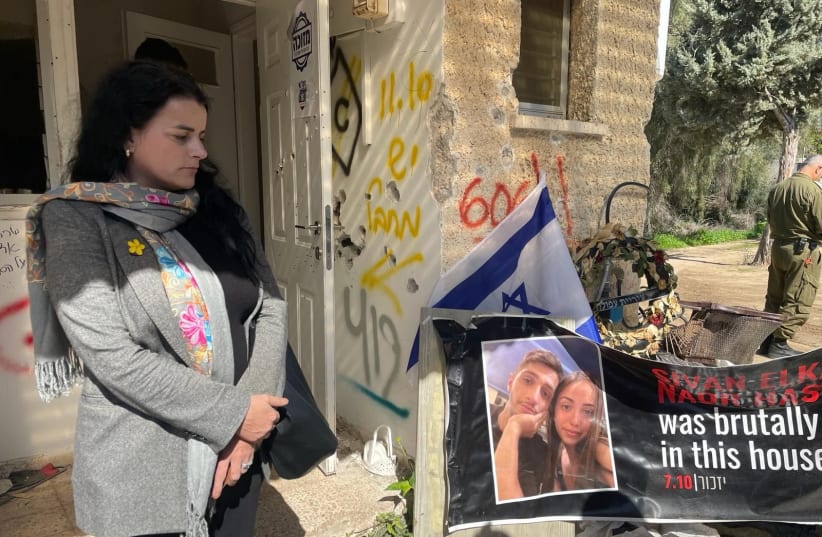
Vasfije Krasniqi Goodman, a Kosovo Albanian and a prominent advocate against wartime sexual violence, has arrived in Israel as a guest of Shurat HaDin, a women-led non-governmental organization dedicated to combatting terrorism and anti-Semitism.
Her visit, scheduled between February 5th and 8th, aimed to witness Hamas' atrocities, show solidarity with Israeli victims, and demand justice for victims of sexual assaults perpetrated by Hamas' "Nukhba" terrorists.
Krasniqi addressed her upcoming visit to Israel, saying, "I feel honored and privileged to answer Shurat HaDin's call to come to Israel to show my support and my sympathy to the victims of Hamas' crimes. It was completely unfair that the international community has turned its back to Israeli women and men who fell victims to such terrible crimes for so much time."
Go to the full article >>Gaza hostage deal causing tension between Hamas and Hezbollah - expert
He claimed the document was released against the wishes of Hamas: "Hamas did not want to release this document. It was published by Hezbollah.
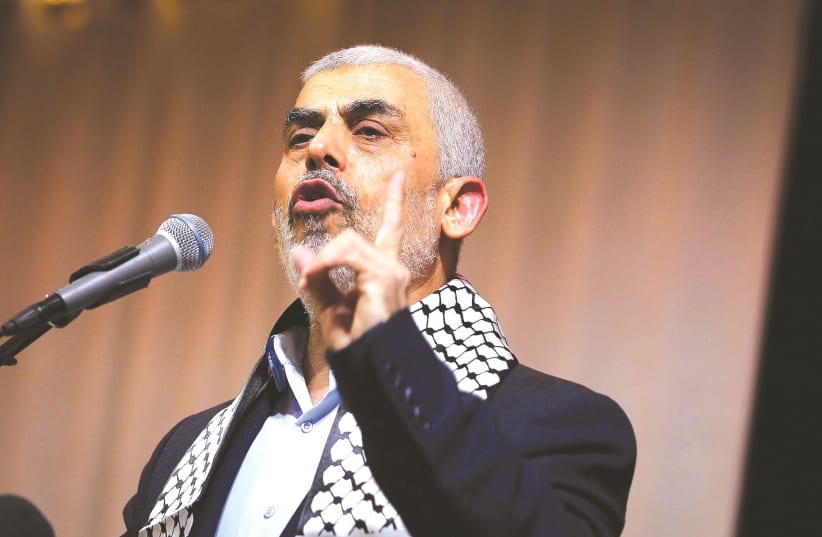
Hamas's demands for the proposed hostage deal were prematurely published by Hezbollah, Channel 12 expert and commentator Ehud Ya’ari claimed on Wednesday.
"We have to look at what happened backward. We said in advance Yahya Sinwar will give his answer, but other people who are not in the Strip will formulate it in a different way," he noted.
He claimed the document was released against the wishes of Hamas: "Hamas did not want to release this document. It was published by Hezbollah. Yesterday, Qatar's foreign minister rushed to report and speak with the Iranian Foreign Minister. Hamas did not plan for things to be published like this. I have a feeling, from the relationship with them, that they were a little surprised."
"As far as Hamas is concerned, this should not have been published. This is the beginning of a difficult debate that can take time. It’s not that they submitted a document, and it is final. They will have to continue bargaining, and it will be a difficult bargaining," he added.
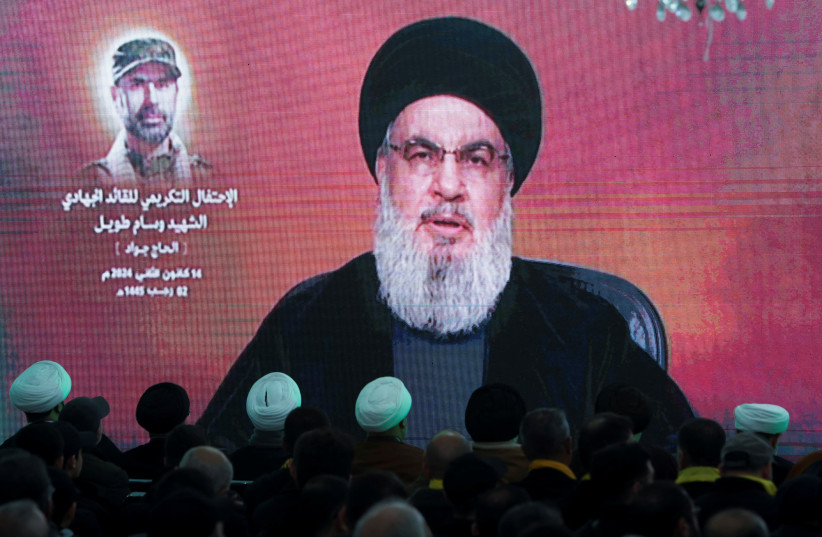
"It is important to note that when the Egyptians announce that the talks will resume, they also do so indirectly. I still do not have such confirmation on our side," he added.
He reiterated that Sinwar wishes the war to end at all costs: "The impression is that Sinwar is looking for a way to stop the war at any cost. He isn't necessarily looking for a temporary pause. Even now, when they are sitting in Cairo, the final decision will be his."
Hamas's demands
As mentioned, in addition to demanding the IDF’s withdrawal from the Gaza Strip, the terrorist organization also demanded the release of terrorists and the increase of humanitarian aid; it now appears that Hamas is also demanding an end to Jews visiting the Temple Mount.
In addition, they demand the entry into the Gaza Strip of at least 60,000 caravans so that every week from the entry into force of this phase, 15,000 units would enter the Strip along with 200,000 tents at a rate of 50,000 per week.
Hamas also demands that the repair and restoration of infrastructure be initiated. Furthermore, the organization demands the approval of a plan for the restoration of houses, economic enterprises, and public facilities, the supply of renewed fuel, and a commitment to supply electricity and water.
In addition, Hamas also demands the supply and introduction of heavy equipment, civil defense, and health equipment, alongside the process of rebuilding hospitals and bakeries to establish shelter camps for civilians.
Go to the full article >>Analysis of Hamas fatality figures points to manipulation, report says
Following the ground invasion on October 27, discrepancies became more common with some figures being reduced by 1000 in just five days.
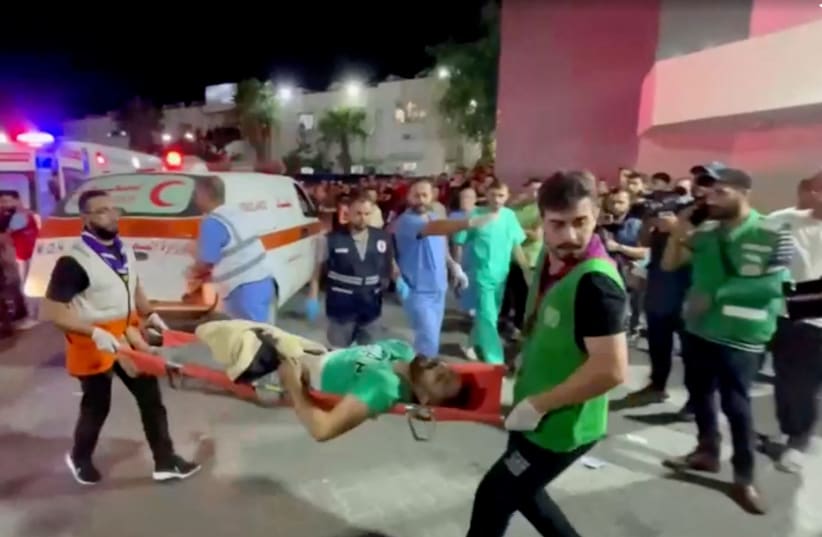
Hamas has been regularly accused of manipulating the death count in Gaza throughout the war, but with independent verification being nearly impossible, such accusations have been hard to prove.
The Washington Institute for Near East Policy released a report at the end of January that attempted to show the discrepancies in the official fatality report's figures, and that such discrepancies were most likely caused by manipulations.
The report begins by stating that Hamas's figures have been previously quite similar to both the UN's official figures and Israel's figures, which is why they have been given so much credence by international organizations, however reporting since the start of the ground invasion on October 27 has become less rigorous and less reliable.
President Biden questioned the figures released before the ground invasion, saying he doesn't doubt that innocents have been killed but that he has "no confidence in the number that the Palestinians are using."
Reports before the ground invasion seem to have been accurate, with all but 281 fatalities having identification numbers, genders, and ages.
The Hamas-run Gaza Health Ministry stopped reporting fatalities on November 10, resuming its reports on December 2, although with significantly less detail.
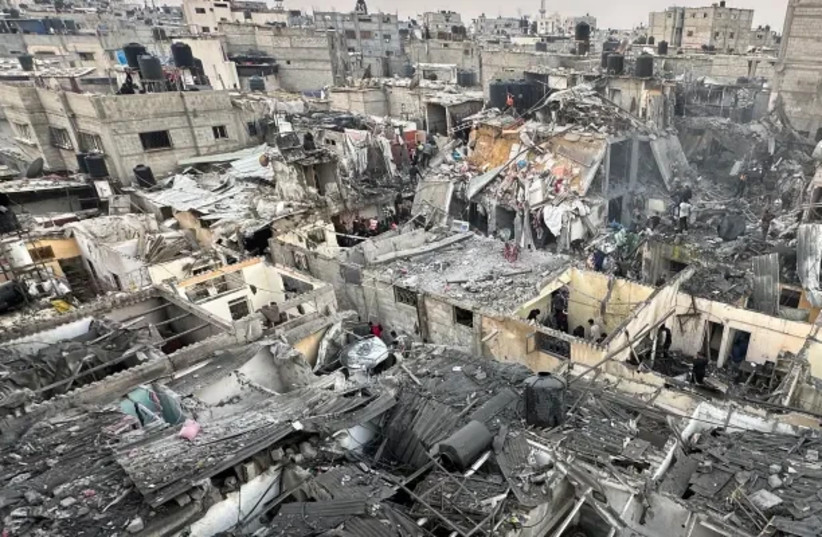
The report suggests that reports for all fatalities after November 10 lack credibility due to their reliance on "reliable media sources," which the report says are largely composed of news clips found online or on TV. UN reports have not mentioned that they rely on such media reports for their data.
The report warns, "Here a cautionary note is necessary: even as most combatants are men, most Gazan men are still civilians, rendering the overall number of men killed an imperfect proxy for Hamas fighters."
Citing discrepancies in reporting on the deaths from the al-Ahli Hospital blast, when Israel was falsely accused of attacking the hospital, as well as general inconsistencies, the report finds that the number of male fatalities has been manipulated, towards underreporting.
For example, during the al-Ahli hospital blast in which Hamas claims 471 were killed, Hamas figures show only 7 other people were killed throughout Gaza during the same 24-hour period as the blast (478). This is completely inconsistent with figures released by the UN saying 62 were killed in two airstrikes the same night in the Jabalia refugee camp, which should make the total 533 not the 478 published by Hamas.
In another event, the numbers released in the same report were completely inconsistent with each other, with summaries on one page saying 7,028 had been killed, while a few pages later the totals on the graphs added up to different figures with none equaling 7,028.
Following the ground invasion discrepancies increased
Following the invasion on October 27, the report says discrepancies became more common.
On October 29, two days into the invasion, the Health Ministry released figures that showed an unexplained decrease in the total number of male fatalities of 72 from 2,231 to 2,159. On November 5, there was another revision down of 274 from 2,890 to 2,616.
The rate of fatalities across genders also altered dramatically following the invasion, before October 27 male fatalities were about 34%, while females were at 25% and children at 41%, while afterward, males comprised around 25%, females 33%, and children 42%.
"The Health Ministry figures released since November 11 should be viewed with extra skepticism given the ministry’s acknowledgment that the figures for northern Gaza come from “reliable media sources,” which are unverified and extremely unlikely to include militant deaths."
As the war progressed large discrepancies began to appear between the Hamas-run Health Ministry and the Hamas-run Government Media Office (GMO), with a report from the Health Ministry claiming 5,577 adult men had been killed and a GMO report which showed 4,212 men killed at most.
From December 2 to December 8 the GMO reduced the total male fatalities by over 1000 (from 4,563 to 3,499).
By January 1 the Health Ministry was reporting that before November 11, 6,088 men had died in Gaza, the GMO reported on the same day that a total of 6,098 men had been killed by January 1, implying only 10 men had died across 51 days of fighting from November 11 until January 1.
The report also challenges the validity of the figures themselves saying that 61% of the fatality reports after November 10 come from media reports which are highly susceptible to manipulation.
When compared to IDF figures, which claim 9,000 fighters killed in Gaza, the discrepancy becomes that much larger. The report says to treat IDF numbers with some skepticism, however, even then the 6,088 male fatalities claimed by Hamas, which will include civilians, fall far short of Israeli estimates of just the militants killed.
However, it is important to remember that producing accurate up-to-date fatalities during a war is very difficult and revisions are to be expected, as occurred when Israel revised down the total killed on October 7. The report even cites this as an example of why accurate reporting of fatalities often takes significant time.
The report concludes that the motives for reducing the number of male fatalities are clear.
"What can be said for certain is that Hamas-produced statistics are inconsistent, imprecise, and appear to have been systematically manipulated to downplay the number of militants killed and to exaggerate the proportion of noncombatants confirmed as dead," the report concludes.
Go to the full article >>Blinken: Oct. 7 can’t be a license for Israel to dehumanize others
The US has “made clear that Israel is fully justified in confronting Hamas and other terrorist organizations.” Blinken said.
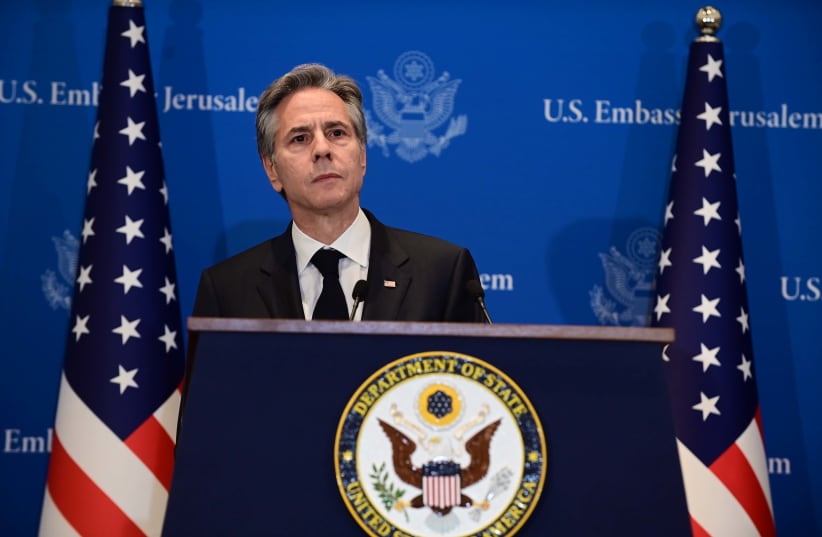
Israel mustn’t lose sight of the humanity of the Palestinians in Gaza, US Secretary of State Antony Blinken said as he urged the government to do more to protect civilians in the enclave.
“Israelis were dehumanized in the most horrific way on October 7. The hostages have been dehumanized every day since, but that can not be a license to dehumanize others,” Blinken told reporters in Tel Aviv on Wednesday night.
Go to the full article >>Netanyahu: Anyone would say 'no' to Hamas’s terms for Gaza hostage deal
Hamas’s insistence on a prolonged pause to the war, a permanent ceasefire, and a complete IDF withdrawal from the enclave doused optimism that the release of the captives was around the corner.
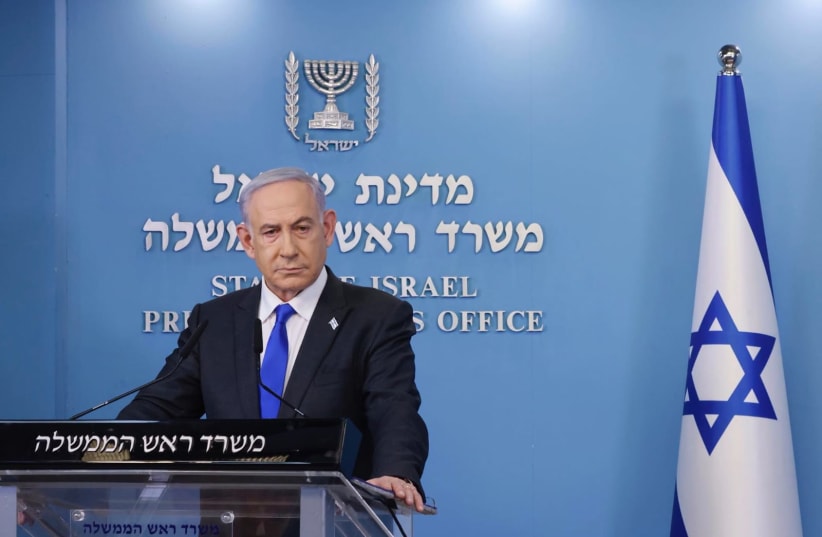
Israel won’t accept Hamas’s latest terms for a hostage deal, Prime Minister Benjamin Netanyahu told reporters on Wednesday but he did not rule out continued negotiations for an acceptable agreement to secure the release of the remaining 136 hostages held in the enclave
“From what I saw, even you would say no” to Hamas’s offer, Netanyahu told the reporter who quizzed him on the proposal. It included a demand for a permanent ceasefire, an IDF withdrawal from Gaza. and the release of terrorists jailed for killing Israelis.
Go to the full article >>'Every Israeli is next in line': Released hostages in message to Netanyahu
Adina Moshe addressed Netanyahu and said, "If you continue in this line of destroying Hamas, there will be no hostages left to save. Also among the young ones."
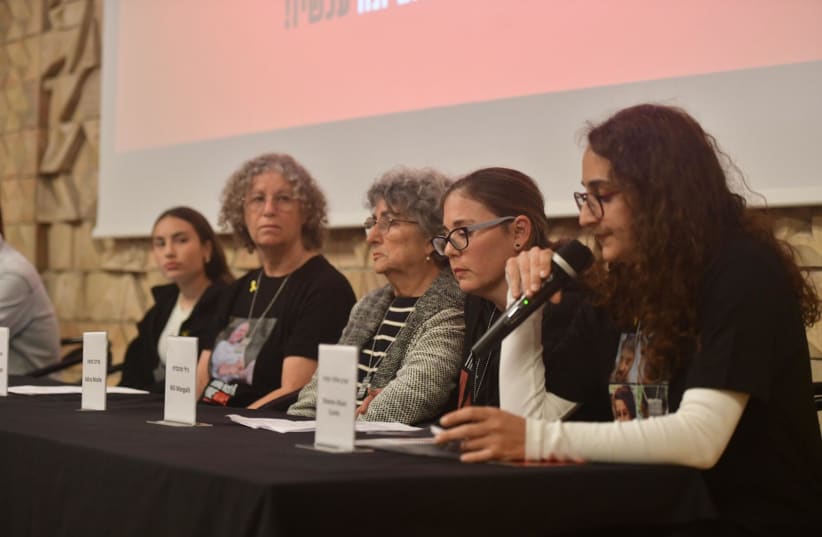
Six women who were kidnapped to Gaza in October and were released during the November ceasefire deal with Hamas held a press conference on Wednesday in a plea to the Israeli government to return the hostages.
Sharon Aloni-Kunyo, 34, from kibbutz Nir Oz, who was released with her two three-year-old daughters, Yuli and Emma, from captivity, is still waiting for her husband, David, to return.
She said, "136 hostages are waiting without oxygen, food, or hope to be saved," adding, "The price is high, but abandoning the hostages is a historical stain."
Go to the full article >>How IDF big data saved Israeli mourners from mass casualty Hamas attack
Lotem analysts broke down Hamas’s rocket firing patterns, which they had gathered using new big data digital gathering tools.
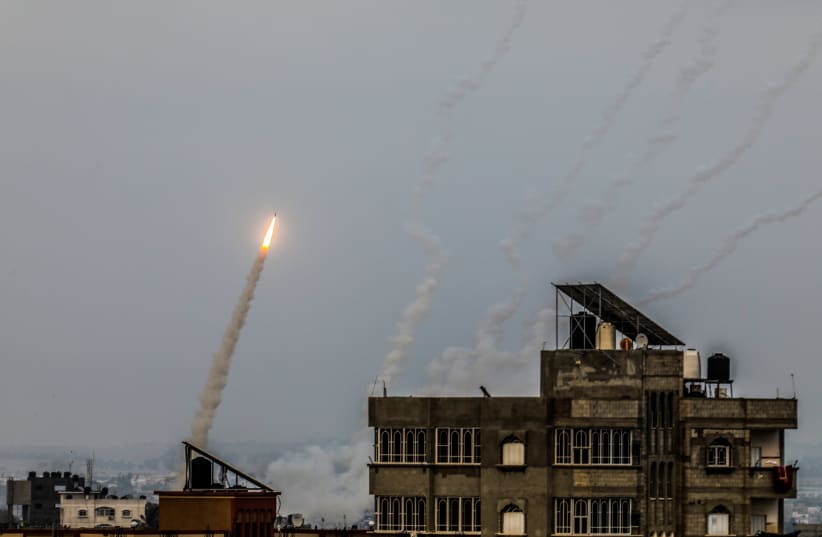
The IDF Lotem Technology Unit’s big data collection and analysis capabilities saved hundreds of mourners at a funeral on October 17 from a likely Hamas rocket attack, The Jerusalem Post has learned.
On October 17, the extended Zohar family was due to hold a funeral service in Rishon Lezion for family members killed by Hamas at Nahal Oz during the invasion earlier that month, according to Lotem, part of the IDF’s C4I Branch. Because this was a very large event with expectations for many attendees, it was exactly the type of potential mass casualty event that Hamas would be expected to target, it said.
This was at a time when Hamas was still firing hundreds of rockets per day, including large numbers toward Rishon Lezion and the Tel Aviv area daily.
Go to the full article >>Israel-Hamas War: What you need to know
- Hamas launched a massive attack on October 7, with thousands of terrorists infiltrating from the Gaza border and taking some 240 hostages into Gaza
- Over 1,200 Israelis and foreign nationals were murdered, including over 350 in the Re'im music festival and hundreds of Israeli civilians across Gaza border communities
- 136 hostages remain in Gaza, IDF says